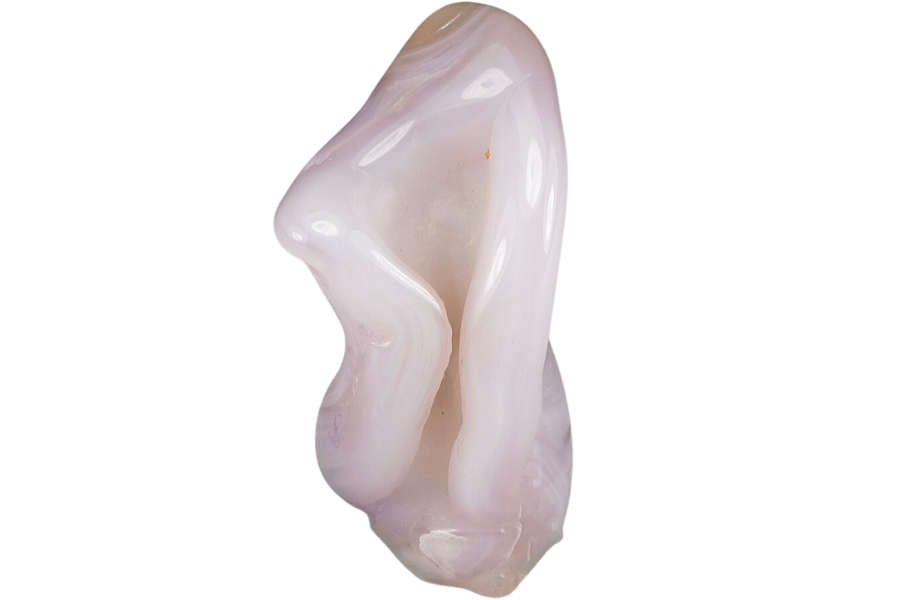Chalcedony is a gemstone that you can find in all sorts of shapes and colors. Imagine finding a rock that can be blue, pink, green, or even rainbow-colored! It gets these amazing hues from tiny crystals that form in unique patterns, which is how we get the different types of chalcedony.
This gemstone forms over a really long time, deep inside the earth or in volcanic rock. When water with silica gets into a hollow space in a rock, it starts to harden and form layers. Over thousands of years, these layers build up and create chalcedony.
One really cool fact about it is that people have been using it for thousands of years to make jewelry and art. Even though it’s quite hard, it can be carefully shaped and polished to create stunning pieces.
From ancient civilizations to modern artists, people have always found ways to use different types of chalcedony for its unique colors and patterns to create something amazing.
The 7 Different Types Of Chalcedony And What They Look Like
As we said, chalcedony is an exciting gemstone that comes in a lot of different types. Some types can show off vibrant colors like electric blue or deep apple-green, while others might be clear and colorless but with sparkly bands. Some are known for special patterns that look like landscapes, forests, or even drops of blood!
Each type of chalcedony has a unique formation process that gives it different colors and patterns. The price and value of chalcedony also differ depending on it. In this discussion, we’ll dive into the amazing world of this gem, exploring its different types and their beautiful, diverse appearances.
Agate
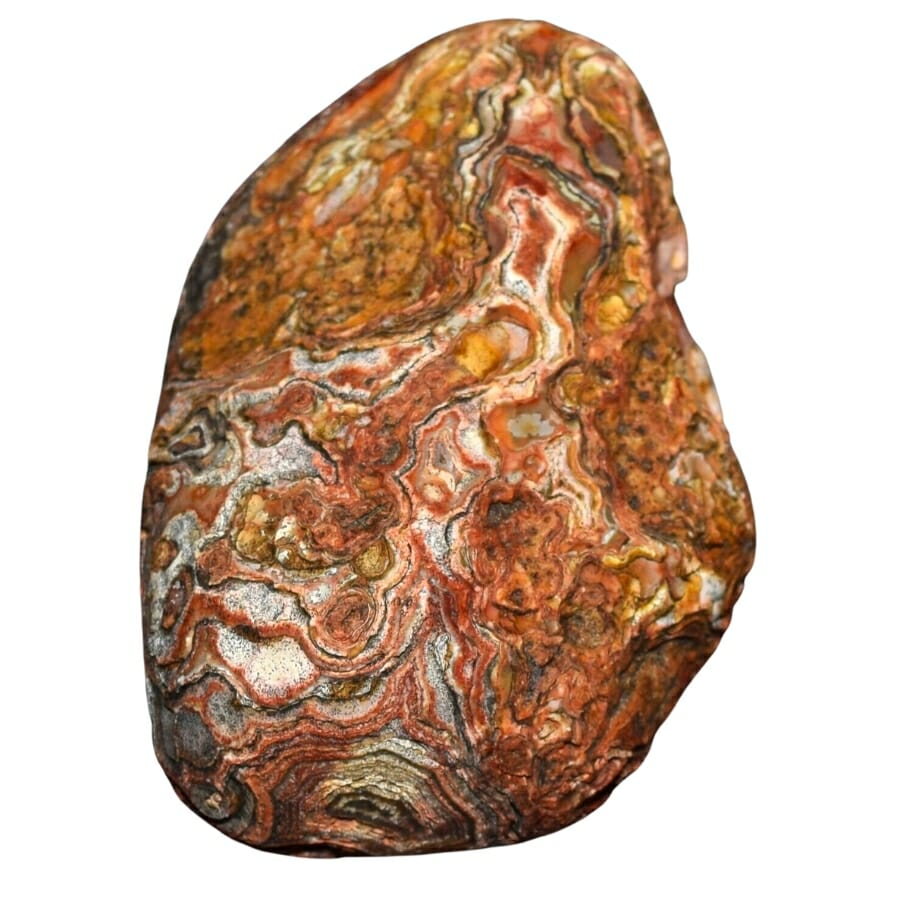
Agate is an interesting type of chalcedony that’s recognized by its distinct bands or stripes of color. These bands come in a whole mix of colors. Some agates might have bands that are blue, red, green, or brown, while others could be nearly clear. Each band forms one at a time, creating a sort of layered look.
The amazing thing about agate is that each one is unique. No two stones have the same colors or patterns. That’s why they’re so popular for making jewelry and decorative items. You’re sure to have a one-of-a-kind piece! If you want to know more about how much agate is worth, check out our article on that.
Where you can find Agate
Agate is found in many places all over the world. Some of the best-known locations are in the U.S., Mexico, Brazil, and Australia. It usually forms in volcanic rocks, so areas with past or present volcanic activity are good places to look.
Here’s a comprehensive guide to help you find agates near you.
DON'T MISS OUT ON ANY GREAT FINDS!
While you're out searching you're going to find A LOT of other interesting rocks and minerals along the way. The last thing you want to do is toss out something really interesting or valuable. It can be easy to misidentify things without a little guidance.
You absolutely need a good reference guide in order to understand what you're looking at!
We've put together a fantastic field guide that makes identifying 140 of the most interesting and valuable rocks and minerals you will find REALLY EASY. It's simple to use, really durable, and will allow you to identify just about any rock and mineral you come across. Make sure you bring it along on your hunt!
Now, back to the identification specifics:
Bloodstone

Bloodstone, which is also called heliotrope, is a fascinating type of chalcedony that’s pretty different from most others. It gets its name from the tiny red spots that look like drops of blood against a dark green background. These are usually caused by iron oxide, the same stuff that makes rust.
Bloodstone is pretty popular, and not just because it looks cool. People have believed for a long time that it has special healing properties. Some even say it can increase strength or courage!
Where you can find Bloodstone
Bloodstone is found in many different places around the world, but India, Brazil, Australia, and the United States are some of the most common sources. In the U.S., you can find bloodstones in states like California and Oregon.
If you want to know more about where to go rockhounding for bloodstone, check out our guide article.
Carnelian
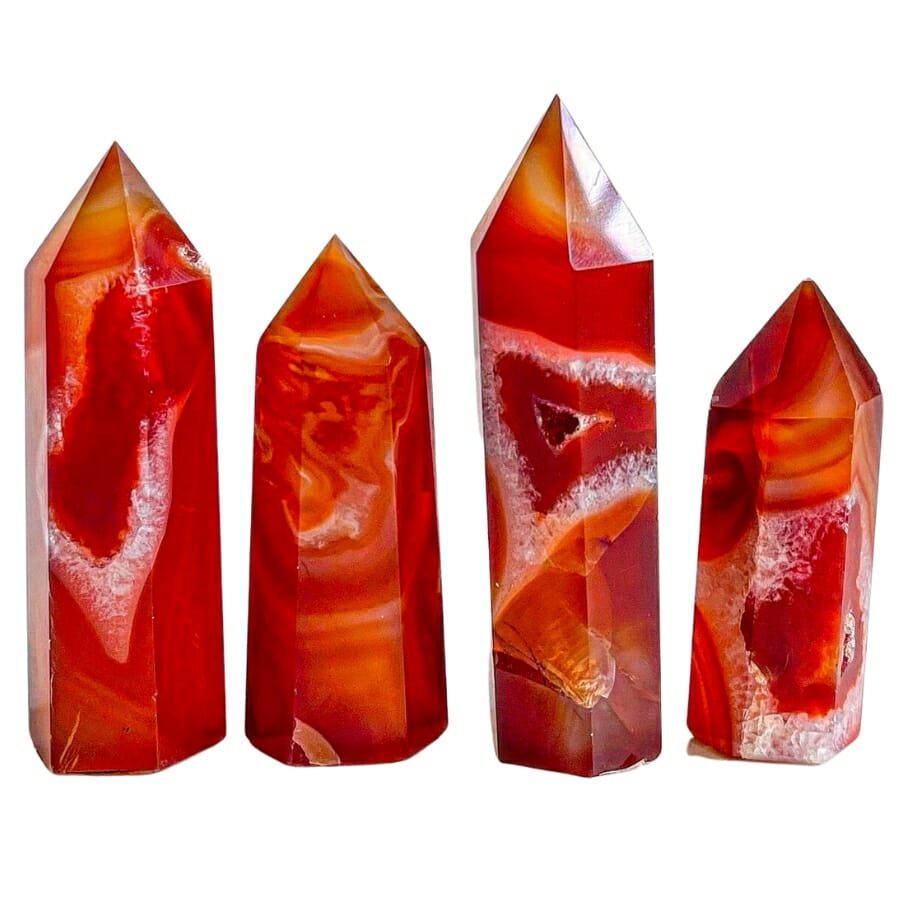
Carnelian is a special type of chalcedony that has a vibrant, fiery color. Picture a beautiful sunset or glowing embers, and you’ve got the color of carnelian. It ranges from orange to a deep, reddish-brown color. This awesome color comes from tiny bits of iron oxide or rust trapped inside the stone.
Ancient people used carnelian to make seals and jewelry, and it’s still popular today for beads and other decorative items. Its many uses have influenced the value of carnelian throughout the years.
Where you can find Carnelian
The great news is that carnelian is pretty widespread. Some of its biggest sources are India, Brazil, and Uruguay. Here, you can find it in Texas, Oregon, and Washington.
If you want to look for carnelian, refer to our guide on the gem mining sites near you.
Chrysoprase
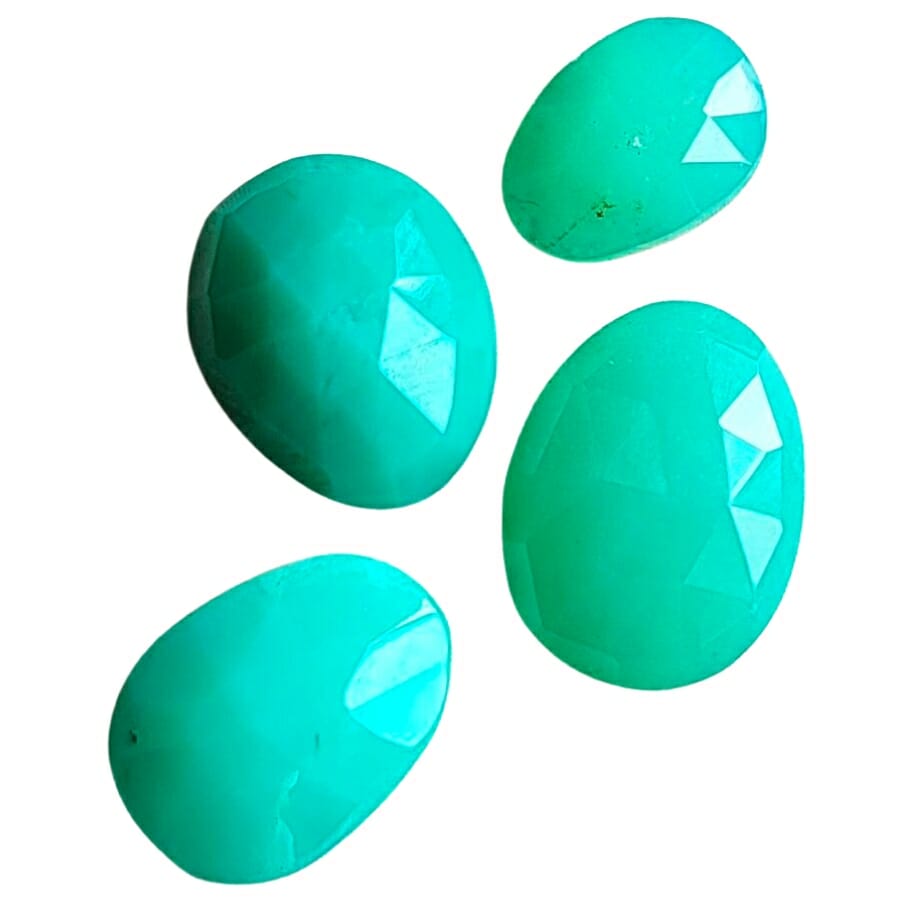
Chrysoprase comes in a stunning apple-green color. Its eye-catching color comes from nickel, a kind of metal, inside the stone. And unlike most other chalcedony types, chrysoprase isn’t banded or striped— it’s all one solid color!
Chrysoprase has been loved for a long time because of its beautiful color. People have used it in jewelry and decorations for thousands of years! It’s also thought to have special metaphysical properties, like helping people feel more positive or connected to nature.
Where you can find Chrysoprase
This crystal is actually found in several places, but Australia is one of its best sources. Other big sources are Brazil, Madagascar, and Russia. You can also find it in California and Arizona. To know more about where to find crystals, specifically, chrysoprase, read our article on that.
Jasper
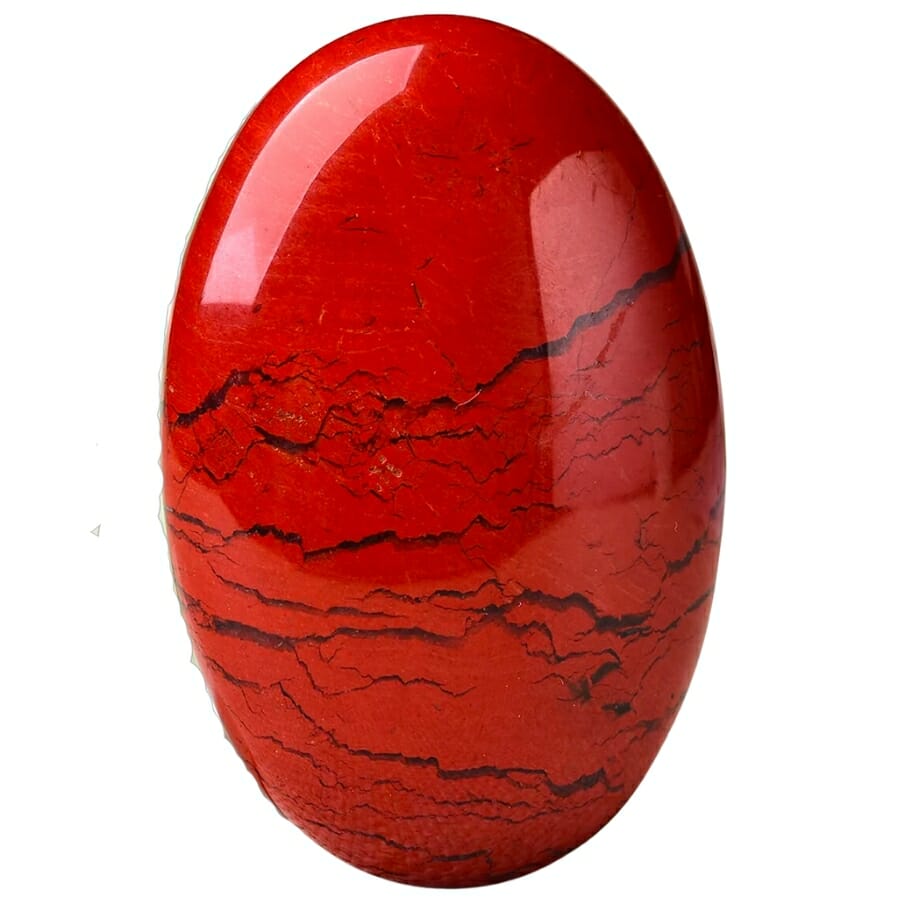
Jasper is a special type of chalcedony that stands out with its wide range of colors and patterns. It can be red, yellow, brown, or green, and it’s usually opaque, which means you can’t see through it. Some jasper can even look like a tiny painting of a landscape, with different colors forming the sky, ground, and trees!
These amazing colors come from different kinds of minerals mixed into the silica that makes up the chalcedony. For example, iron can give jasper a red or yellow color, while clay can make it look blue or green. And the patterns form from the way these minerals get mixed in.
To know more about what jasper is worth, check out our linked article.
Where you can find Jasper
Jasper is found in many different places around the world. In the country, it’s common in California, Oregon, and Idaho. But you can also find it in other countries, including Brazil, Australia, and South Africa.
Onyx
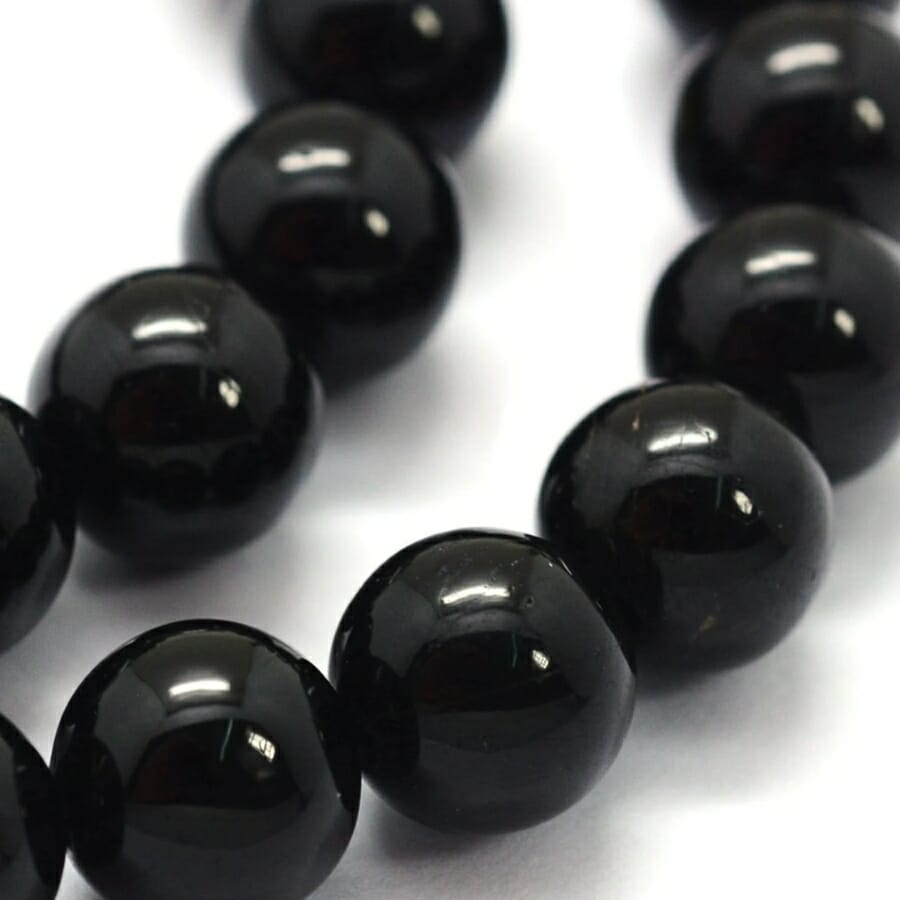
Onyx is a super stylish type of chalcedony that’s known for its sleek, black color. But did you know it can also come in white, or even have bands of black and white together? Its colors come from the way the tiny crystals inside the chalcedony form layers. Each layer can be a different color, and they stack together like a sandwich.
Onyx has been popular for a long time. Ancient people used it to make all sorts of things, from jewelry to bowls to statues! Even today, people love using onyx to make things like beads, cabochons, and other decorative items. With its appeal, you might be curious to know how much onyx is worth, and we’ve got you covered on that!
Where you can find Onyx
Some of the best-known sources of onyx are Brazil, India, and Madagascar. Here, you can find it in Arizona, California, and Oregon, as it usually forms in areas with lots of volcanic activity.
Sard
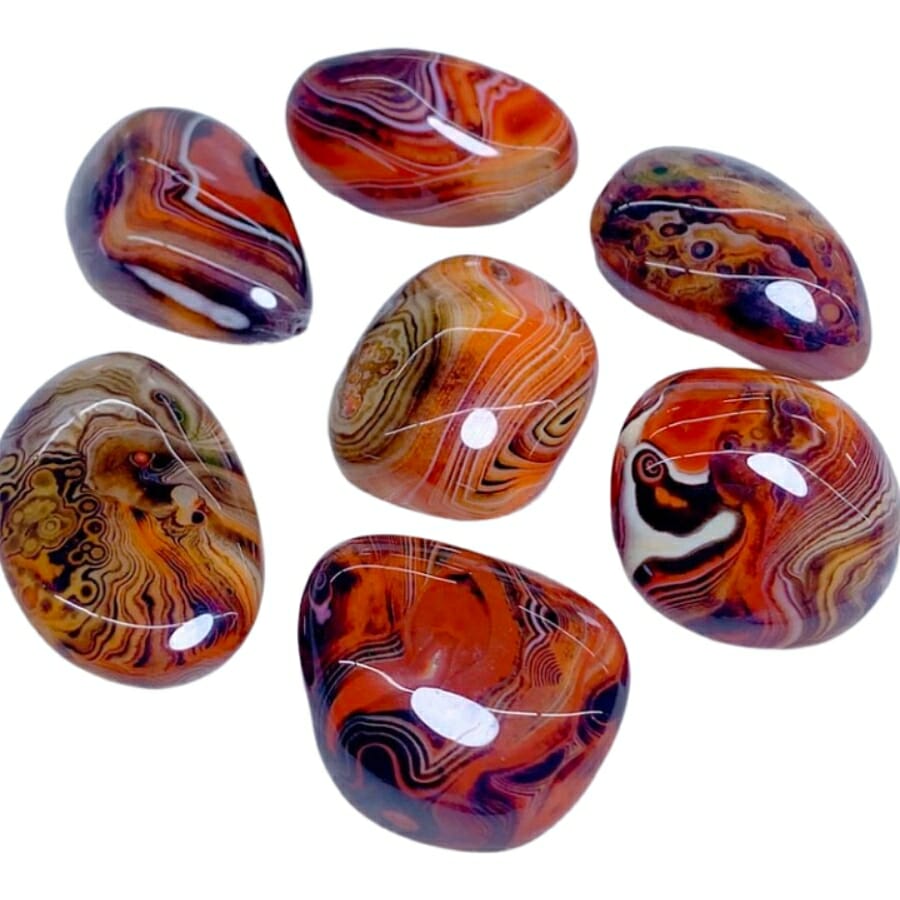
Sard is the type of chalcedony that’s known for its lovely colors. Imagine the warm colors of a campfire: that’s what sard looks like! It ranges from yellowish-red to darker brownish-red. Its color comes from tiny bits of iron oxide or rust that get mixed in with the silica that forms the chalcedony.
In the past, people used sard for seals, amulets, and other decorative items. At one point, it was even considered more valuable than gold, silver, or sapphire! Even today, people enjoy using sard for jewelry and carvings.
Where you can find Sard
Luckily, sard is found in several places around the world. Some of its most common sources are Brazil, Uruguay, and India. If you’re planning on looking for it here, you might find sard in Texas and Oregon, areas with volcanic activity or certain types of sedimentary rocks.

